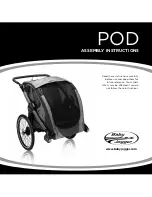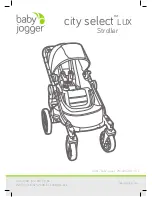
Evco S.p.A. • Code 104F215E20 • page 1/8
EVF215
Digital controller for refrigerated cabinets, made up from user interface with capacitive touch keys
(integrated into the unit) and a control module
version 2.0
EN
ENGLISH
1
IMPORTANT
1.1
Important
Read these instructions carefully before installation and before use and follow all installation recommendations regarding installation and the electric connections. Keep the instructions with the instrument for future
consultation.
The instrument must be disposed of in compliance with the local Standards regarding the collection of electrical and electronic appliances.
2
INTRODUCTION
2.1
Introduction
EVF215 is a digital controller developed for the management of normal
or low temperature refrigerated cabinets. whose design and easy
cleaning cover an important role.
The instrument has:
• clock
• alarm buzzer
• 3 measurement inputs (cabinet probe, evaporator probe and
condenser probe) for NTC probes
• 2 digital inputs (door micro switch and multipurpose)
• 5 digital outputs (relays) for compressor management
(30 A @ 250 VAC), defrost and evaporator fan management, a fourth
and a fifth utility (cabinet light, demisting heater, auxiliary output,
alarm output, door heater, evaporator valve or condenser fan);
defrosting can be electric or using hot gas.
• TTL serial port with MODBUS communication protocol.
The models have “split” execution (user int control module).
The user interface is behind a methacrylate sheet and is made up from
a 4-digit custom display (with icon function) and 6 capacitive touch
keys (set, up, down, defrosting, cabinet light and on/stand-by); back
panel installation is envisioned, using double-sided adhesive tape, for
its complete mechanical and aesthetic integration into the cabinet.
The control module is in open frame board; installation is envisioned
on a flat surface with spacers.
Using the EVKEY programming key (to be ordered separately)
configuration parameters can be uploaded and downloaded.
Using a serial interface (to be ordered separately) it is also possible to
connect the controller to the Parameters Manager set-up software or
to the monitoring and supervision system of RICS plants (via TTL, with
MODBUS communication protocol).
3
DIMENSIONS AND INSTALLATION
3.1
User interface dimensions
The dimensions are expressed in mm (in); installation is envisioned behind the panel using double-sided adhesive tape.
3.2
Control module dimensions
The dimensions are expressed in mm (in); installation is envisioned on a flat surface using spacers.
3.3
Recommendations for installation
• make sure that the work conditions (temperature of use, humidity,
etc.) lie within the limits indicated in the technical data
• do not install the instrument in proximity of heat sources (heaters,
hot air pipes etc.) appliances with strong magnets (large diffusers
etc.), places subject to direct sunlight, rain, humidity, excessive dust,
mechanical vibrations or shocks
• any metal parts in proximity of the control module must be at a
distance such as not to compromise the safety distances
• make sure the display is perfectly adherent to the methacrylate
• in compliance with Safety Standards, the protection against any
contact with the electric parts must be ensured via correct installation
of the instrument. All parts that ensure protection must be fixed in a
way such that they cannot be removed without the aid of a tool.
4
USER INTERFACE
4.1
Preliminary considerations
The following functioning states exist:
• the “on” status (the instrument is powered and on: the regulators can
be on)
• the “stand-by” status (the instrument is powered but is switched off
software: the regulators are off, the possibility of switching the cabinet
light or auxiliary output on/off in manual mode depends on parameter
u2)
• the “off” status (the instrument is not powered).
Successively, the term “switch-on” means that the passage from the
stand-by status to the on status; the term “switch-off” means the passage
from the on status to the stand-by status.
When the instrument is powered it re-proposes the status in which it
found itself at the time when the power supply was disconnected.
4.2
Instrument switch-on/off in manual mode
• make sure that the keyboard is not locked and that no procedure is
in progress
• hold the key down for 2 s: the on/stand-by LED switches-on/off.
The multipurpose input can also be used to switch the instrument on/
off in remote mode.
4.3
The display
If the instrument is on, during normal functioning the display will
show the temperature of the cabinet, except during defrosting, when
the instrument will display the temperature established with
parameter d6.
If the instrument is off, the display will be off.
4.4
Evaporator temperature display
• make sure that the keyboard is not locked and that no procedure is
in progress
• hold the key down for 1 s: the display will show the first label
available
• press and release the key or the key to select “
Pb2
”
• press and release the key.
To exit the procedure:
• press and release the key or do not operate for 60 s
• press and release the key or the key until the display shows the
cabinet temperature or do not operate for 60 s.
Alternatively:
• press and release the key.
If the evaporator probe is absent (parameter P3 = 0), the “
Pb2
” label
will not be displayed.
4.5
Condenser temperature display
• make sure that the keyboard is not locked and that no procedure is
in progress
• hold the key down for 1 s: the display will show the first label
available
• press and release the key or the key to select “
Pb3
”
• press and release the key.
To exit the procedure:
• press and release the key or do not operate for 60 s
• press and release the key or the key until the display shows the
cabinet temperature or do not operate for 60 s.
Alternatively:
• press and release the key.
If the condenser probe is absent (parameter P4 = 0), the “
Pb3
” label
will not be displayed.
4.6
Activation/deactivation of the Overcooling
function
• make sure that the keyboard is not locked, that no procedure is in
progress and defrosting is not in progress along with dripping or
evaporator fan standstill.
• hold the key down for 4 s: the Overcooling LED will switch-on.


























